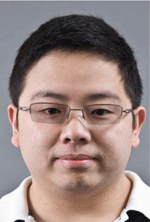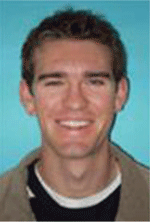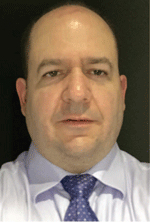The use of integrated production modelling to assess network efficiency and production system optimisation
Y. Fei A , G. Lydyard B , A. Mantopoulos B , D. Marques B C and M. Rondon BA Australian School of Petroleum, University of Adelaide, South Australia, Australia.
B Santos Ltd, South Australia, Australia.
C Corresponding author. Email: David.Marques.Sanchez-Ocana@santos.com
The APPEA Journal 59(1) 211-220 https://doi.org/10.1071/AJ18267
Submitted: 23 October 2018 Accepted: 14 January 2019 Published: 17 June 2019
Abstract
This paper investigates the use of integrated production models to apply a consistent and repeatable approach to assess petroleum production network efficiency and aid production system optimisation. Assessing network efficiency in the manner detailed in this paper allows petroleum professionals to define a maximum network production through the analysis of the pressure drop within a network. This is achieved by comparing the system base production to a simulation of theoretical wellhead water separation (for all inflows), larger diameters of all surface pipelines (double the diameter is used as a maximum case) and a combination of the two using integrated production modelling (IPM). The combination of water separation and larger diameter of all the pipelines represented the maximum network production possible for tangible projects. This allowed the definition of network efficiency value of a petroleum production system on a scale of 0% to 100%. At a screening level, the lower the Network Efficiency Metric (NEM) the greater the likelihood of an optimisation opportunity, prompting additional assessment of special cases. This method was applied to a network of 40 wells using IPM, and NEM values of 95.9% (water separation), 94.6% (double pipeline diameter) and 83.5% (combined) were obtained. These values of network efficiency also corresponded to incremental reserve difference of 4.3, 5.8 and 20.1 Bscf, respectively. The NEM was a crucial component of the screening process and demonstrated an alternative and efficient method for the identification of optimisation projects, which increased production and reserves.
Keywords: integrated production modelling, network efficiency, production system optimisation.

Yang Fei just completed his PhD in Petroleum Engineering at the Australian School of Petroleum (ASP). Currently, Yang is working with PetroAus Pty Ltd and assigned to Santos Ltd as a Network Modeller, responsible for supporting all the compression projects as well as the backout studies for new development wells. Previously, Yang has worked as a Technical Assistant at Santos Ltd for four years. Yang’s area of expertise is in production engineering and optimisation, where he focussed on the development and maintenance of GAP/PROSPER/MBAL models for all the fields and wells that belonged to 13 different Satellites in the Cooper Basin. In addition to that, he was ran various scenarios to identify potential projects to fully optimise satellite performance. Yang’s PhD involved researching about experimental and numerical investigation of nanotechnology on foam stability for hydraulic fracturing application. Member: Society of Petroleum Engineers (SPE), Petroleum Exploration Society of Australia (PESA) and American Association of Petroluem Geologists (AAPG). |

Glenn Lydyard is a chartered Chemical Engineer who has worked for Santos Ltd for 12 years in roles spanning facilities engineering, production engineering, production forecasting, commercial and marketing. He is currently the Team Leader of Advanced Analytics. For a period of five years he was responsible for Santos’ IPM team and was fortunate to have had the opportunity to see it mature from a niche tool to an embedded process for making informed decisions and identifying opportunities. Member: SPE and the Institute of Chemical Engineers (IChemE). |

Athanasios Mantopoulos has his Honours in Water and Petroleum Engineering from the University of Adelaide. Having worked with Santos Ltd for five years, Athanasios occupied roles in network optimisation, production optimisation and field control, before taking a career break. Athanasios’s area of expertise is in production engineering and optimisation, where he focussed on the development and maintenance of GAP/PROSPER/MBAL models for all the fields and wells that belonged to 13 different satellites in the Cooper Basin. In addition, he ran various scenarios to identify potential projects to fully optimise satellite performance. Athanasios is also an author of ‘Best Practice and Lessons Learned for the Development and Calibration of Integrated Production Models for the Cooper Basin Australia’, which was presented at the SPE conference in Nusa Dua Bali, in October 2015. Member: SPE. |

David Marques is a Petroleum Engineer and graduated from the Universidad Central de Venezuela with a Master of Business Administration (MBA) in Australia. He has worked for Santos Ltd for seven years as the Nodal Analysis Competency Lead. Currently, as a Staff Network Modeller, Marques is responsible for network and surface production optimisation in the Cooper Basin. During his time in Santos, Marques also took the lead in developing the production network models for all the areas. He currently provides network modelling training/support within the company. Before joining Santos, David worked for different companies as a consultant for production optimisation in various countries: Mexico, Colombia, Australia, among others. David is also an author of the SPE paper ‘Best Practice and Lessons Learned for the Development and Calibration of Integrated Production Models for the Cooper Basin Australia’. Member: SPE. |

Maria Rondon is a Petroleum Engineer and graduated from the Universidad Central de Venezuela. She has more than 15 years of experience as a Production Engineer. Maria has been working for the Production Engineering team at Santos since 2012. She has worked on well optimisation projects (gas and more recently oil) for the Cooper Basin. During this time she also helped develop the production network models for the area. She currently provides well modelling training within the company. Before joining Santos, Maria worked for Add Energy as a consultant. Her work included projects involving: field development planning, well performance and IPM for several offshore and onshore Australian assets. Member: Engineers Australia. |
References
Acosta, L. M., Jimenez, J. G., Guedez, A., Ledezmae, E., Bello, J., Guzman, M., Millan, A., Marin, E., Gomez, F., Herrera, I., and Cordoba, P. (2005). Integrated Modeling of the Furrial Field Asset applying risk and uncertainty analysis for the decision taking, SPE Europec/EAGE Annual Conference, 13–16 June, Madrid, Spain. (Society of Petroleum Engineers).Al Lawati, M., Al Salmi, A., Al Kharusi, A., Al Hajri, S., and Al Siyabi, I. (2010). Realizing Opportunities Using Integrated Production Modeling in Occidental of Sultanate of Oman. SPE Production and Operations Conference and Exhibition, 8–10 June, Tunis, Tunisia. (Society of Petroleum Engineers).
Alexis, D.A. and Ayala, L. (2012). Assessment of Deliverability of a Natural-Gas-Gathering and -Production System: Development of an Integrated Reservoir/Surface Model. (Society of Petroleum Engineers).
Alkindi, A., and Linthorst, S. J. (2012). Application of Integrated Production and Asset Modeling for Sour Field Development Planning. EAGE Annual Conference & Exhibition, Copenhagen, Denmark. (Society of Petroleum Engineers).
Beggs, H. (2003). ‘Production optimization: using NODAL analysis’. 2nd Edition. (Tulsa, Okla.: OGCI and Petroskills Publications: Tulsa).
Chow, C. V., Arnondin, M. C., Wolcott, K. D., and Ballard, N. D. (2000). Managing Risks Using Integrated Production Models: Applications. Journal of Petroleum Technology 52, 94–98.
| Managing Risks Using Integrated Production Models: Applications.Crossref | GoogleScholarGoogle Scholar |
Dempsey, J.R., Patterson, J.K., Coats, K.H. and Brill, J.P. (1971). An Efficient Model for Evaluating Gas Field Gathering System Design. (Society of Petroleum Engineers).
Harms, L. K. (2005) Better Results Using Integrated Production Models for Gas Wells. SPE Production and Operations Symposium, 16–19 April, Oklahoma City, OK, USA. (Society of Petroleum Engineers).
Holst, R., Malowany, L., and Kopjar, R. (1999). Computer Optimization of Large Gas Reservoirs with Complex Gathering Systems. SPE Annual Technical Conference and Exhibition, 3–6 October, Houston, TX. (Society of Petroleum Engineers).
Mantopoulos, A., Marques, D. A., Hunt, S. P., Ng, S., Fei, Y., and Haghighi, M. (2015). Best Practice and Lessons Learned for the Development and Calibration of Integrated Production Models for the Cooper Basin, Australia. Asia Pacific Oil & Gas Conference and Exhibition, 20–22 October, Bali, Indonesia. (Society of Petroleum Engineers).
Orioha, H. I., Gruba, C. J., Muoneke, G., and Ezuka, I. O. (2012). Application of IPM Modeling for Production Surveillance, Allocation and Optimization. SPE International Production and Operations Conference and Exhibition, 14–16 May, Doha, Qata. (Society of Petroleum Engineers).
Ozdogan, U., Keating, J. F., Knobles, M. M., Chawathe, A., and Seren, D. (2008). Recent Advances and Practical Applications of Integrated Production Modeling. SPE Europec/EAGE Annual Conference and Exhibition, 9–12 June, Rome, Italy. (Society of Petroleum Engineers).
Pothapragada, V., Al Kooheji, H., Al Hajri, S., and Siyabi, I. (2012). Integrated Production System Modeling of the Bahrain Field. International Production and Operations Conference and Exhibition, 14–16 May, Doha, Qatar. (Society of Petroleum Engineers).
Rogers, C. L., and Patterson, D. R. (1973). Production Throughput Efficiency Model for Prudhoe Bay. (Society of Petroleum Engineers).
Shrestha, T., Hunt, S., Lyford, P. A., and Sarma, H. K. (2008). Workflow for Integrated Production Modelling of Gas Wells in the Northern Cooper Basin. Asia Pacific Oil and Gas Conference and Exhibition, Perth, Australia. (Society of Petroleum Engineers).
Stevenson, B. K., and O’Shea, C. D., (2006). Case Study: Modeling of a Large-Scale Tight-Gas Gathering System. SPE Projects, Facilities & Construction. (Society of Petroleum Engineers).
Stoisits, R. F., Bashagour, H. M., and Su, C.-G. (2010). Application of Integrated Production and Reservoir Modeling to Optimize Deepwater Development. SPE International Oil & Gas Conference and Exhibition, 8–10 June, Beijing, China. (Society of Petroleum Engineers).
Thomas, A. O., Tohira, S., Edidiong, T., and Linus, N. (2012). Practical Application of the IPSM in Resolving Gas Availability Challenges and Overall System Optimisation to Maximise Production. Annual International Conference and Exhibition, 6–8 August, Abuja, Nigeria. (Society of Petroleum Engineers).


